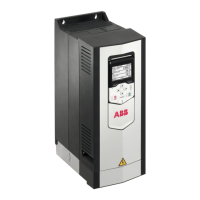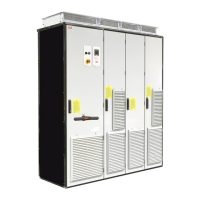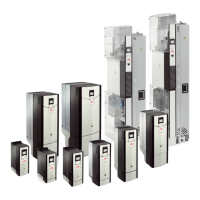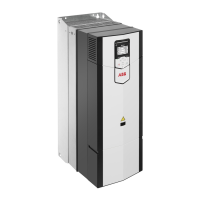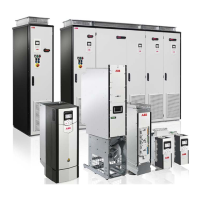Selecting the supply transformer
■
Basic guidelines
1. Define the apparent power of the transformer. You can use this rule of thumb:
S
N
(kVA) = 1.32 × sum of the motor shaft power (kW)
2. Define the nominal voltage for the transformer secondary winding according to
the nominal input voltage of the drive. See the supply unit hardware manual.
3. Make sure that the transformer complies with the electrical power network
specification of the drive. See the appropriate drive or supply unit hardware manual
for:
• nominal input voltage, allowed voltage variation and imbalance
• nominal frequency and allowed variation
• short-circuit withstand strength and short-circuit current protection
requirements
• etc.
4. Consider the additional notes below.
5. Contact the transformer manufacturer for more information on the transformer
selection.
■
Additional notes
A drive with a 12-pulse diode supply unit
A 12-pulse diode supply unit cannot control the load sharing between its diode bridges.
The load sharing depends on factors such as the transformer selection, actual state
of the transformer (voltages, harmonics), supply network and cables. Load unbalance
reduces the load capacity of the drive. To avoid it, and to achieve the optimal drive
system performance, obey the guidelines in this section on the transformer selection
and on other factors.
Use a three-winding transformer, or two two-winding transformers:
• Connection groups: three-winding transformer: Dy11d0 (or Dd0y1). Two
two-winding transformers: Dy11 and Yy0.
• Phase shift between secondaries: 30° electrical
• Voltage difference between secondaries: < 0.5%
• Short-circuit impedance of secondaries: > 5%
• Short-circuit impedance difference between secondaries: < 3%
• No grounding of the secondary windings.
• Static shield is recommended.
90 Guidelines for planning the electrical installation
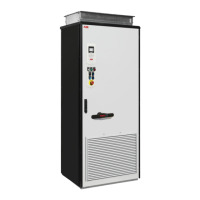
